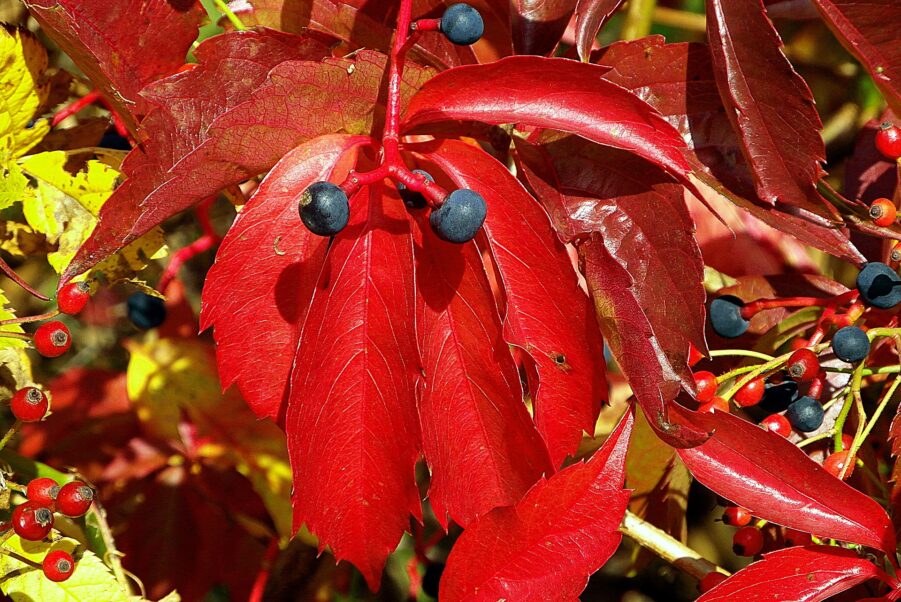The dramatic color changes of autumn leaves in some parts of the world are captivating, seemingly magical, and widely appreciated. Dazzling reds and oranges pop up every year while we’re planning our Halloween costumes or breaking out a flannel shirt. Plant scientists (called botanists) are working to understand why these gorgeous displays happen.
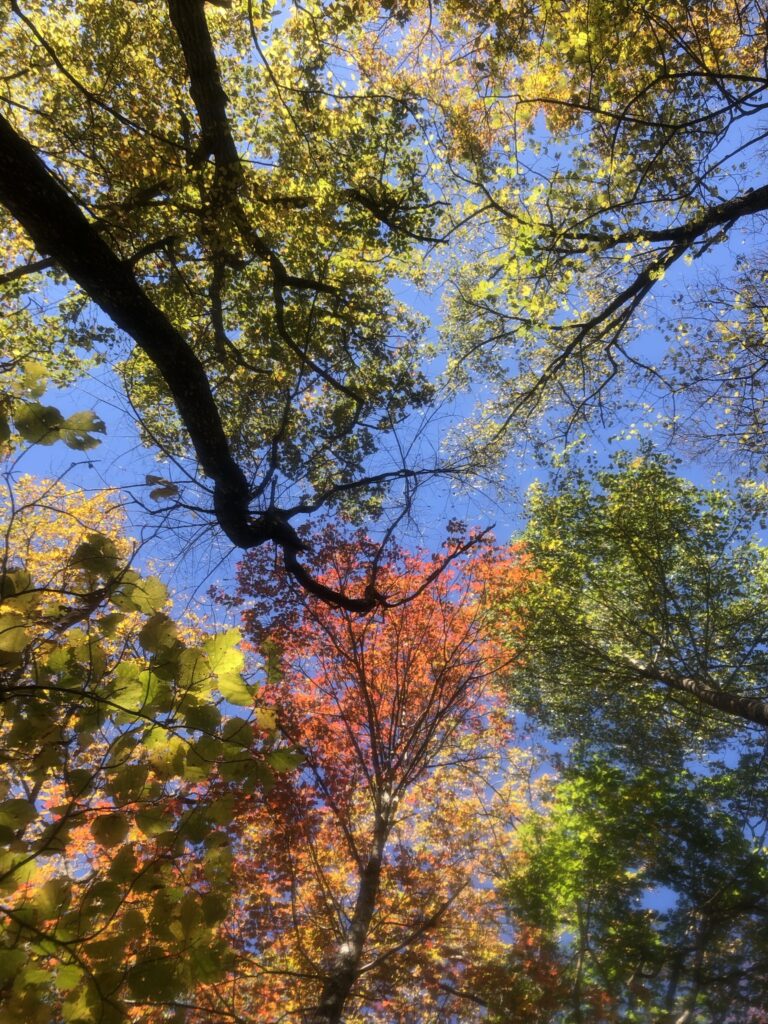
But there is more to the story: leaf colors may actually be a message for animals with color vision. You read that right—gorgeous colored leaves may be talking to us.
We know that some bright colors help protect leaves while plants are preparing for winter. However, just because something serves a particular purpose doesn’t mean it can’t also do something else that is useful.
Consider your eyes, for example. Their primary purpose is for seeing. They give us visual information that we need to survive, like avoiding danger, finding food, and not running into things. Meanwhile, our eyes, eyelids, eyelashes, and eyebrows protect our eyes from things like sand, sweat, and rain.

However, eyes do more than see, don’t they? Have you noticed that you can tell if someone’s smiling even if you can’t see their mouth? Their eyes might show crowsfeet, or twinkle a certain way. A waggling of the eyebrows might help you distinguish a joke from a serious point. A special glance might tell you that it’s time to walk across the bar and say hello to someone.
Many things in nature serve multiple purposes: our eyes see but also send signals.
Our eyes no doubt originated as visual sensory organs. At their simplest they detect patterns and brightness of light, but now they are also some of our best communicators. The same seems to be true for the Fall colors of some trees. Although fall foliage serves a very important purpose, it may be putting in extra work on the side.
Botanists in the 1980’s became interested in why some plants at higher latitudes display vibrant fall colors. They wondered why these plants turned colors at weird times, or when they were sheltered from harsh sunlight. Many of these plants were fruit-bearers in Fall. These include:
- Poison ivy (Toxicodendron radicans; Eastern North America)
- Virginia creeper (Parthenocissus quinquefolia; Eastern North America)
- Oregon grape (Mahonia aquifolium; North America)
- Crowberry (Empetrum nigrum; Northern Europe)
- Blueberries (Vaccinium sp.)
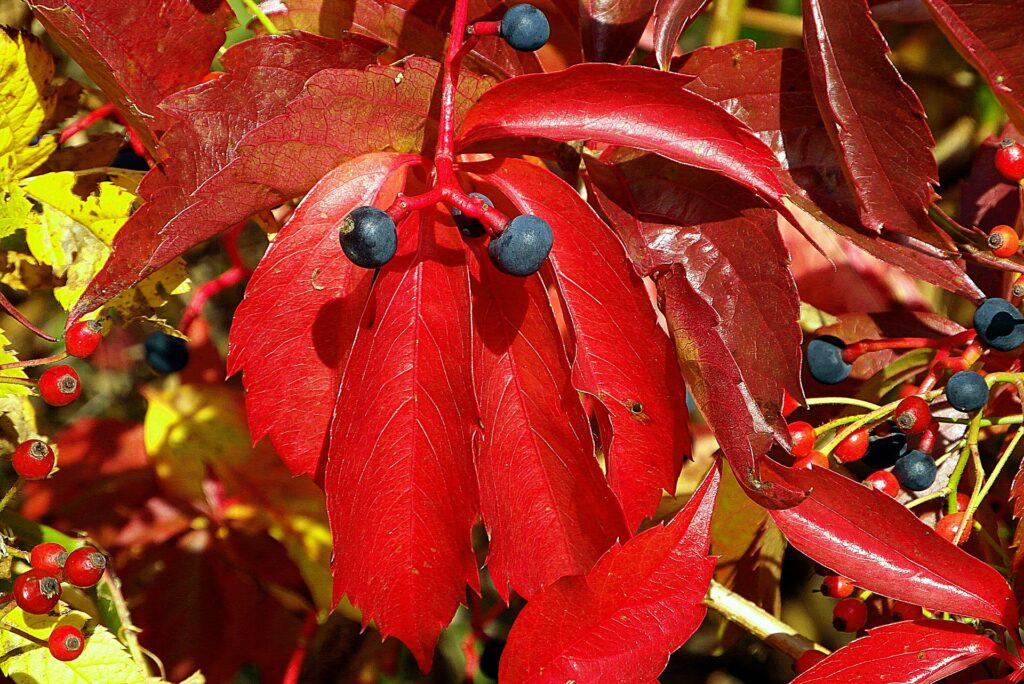
Billboards for hungry travelers?
These plants put out their berries at a very strategic time. During Fall (or Autumnal) migration, millions of migratory bird species are flapping their way Southward. Their journey takes them from higher latitude breeding sites to warmer climates closer to the equator in winter. These highly mobile, flying backpackers are voracious eaters that urgently need to refuel when they stop over in a particular patch of habitat.
Any plant that wants its future young (the seeds within its berries) spread far and wide would benefit from catching their eye. Migratory birds can travel hundreds to thousands of kilometers in a single night during migration, meaning that their droppings—filled with seeds from the fruit they snacked on at a rest stop—would end up far away from their parent plant.
Common North American birds that eat berries in Fall include:
- American Robin (Turdus migratorius)
- Catharus thrushes (Hermit thrush, Swainson’s thrush, Veery)
- Cedar waxwings (Bombycilla cedrorum)
- Gray catbirds (Dumetella carolinensis)
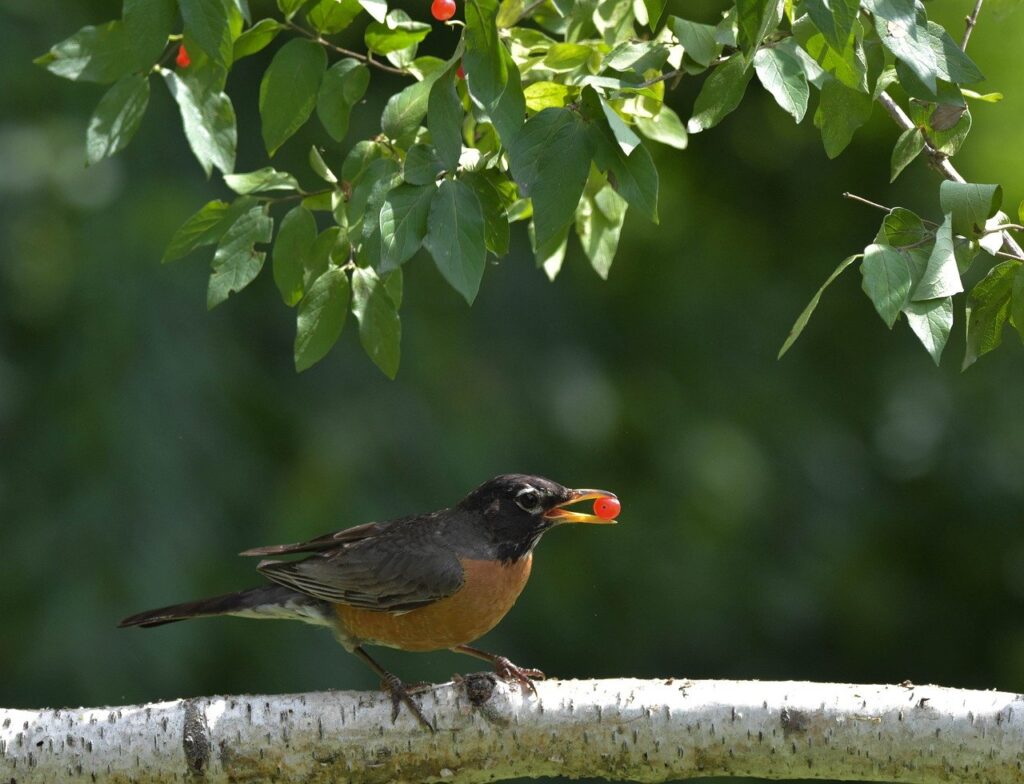
Over time plants that were more attractive to migratory birds would be better at having their seeds dispersed. This increases their likelihood of their having successful young and large, extensive populations. Birds have excellent color vision. This makes colored signals like leaf ‘flags’ an effective way to let them know that there’s food waiting.
You can think of this like a sign for your favorite fast food chain on the highway. In the tropics, where there are more resident birds than migratory ones, it is thought that some fruiting trees that want some feathered attention will also use brightly colored leaves to give birds a heads up that their fruits are almost ready to go.
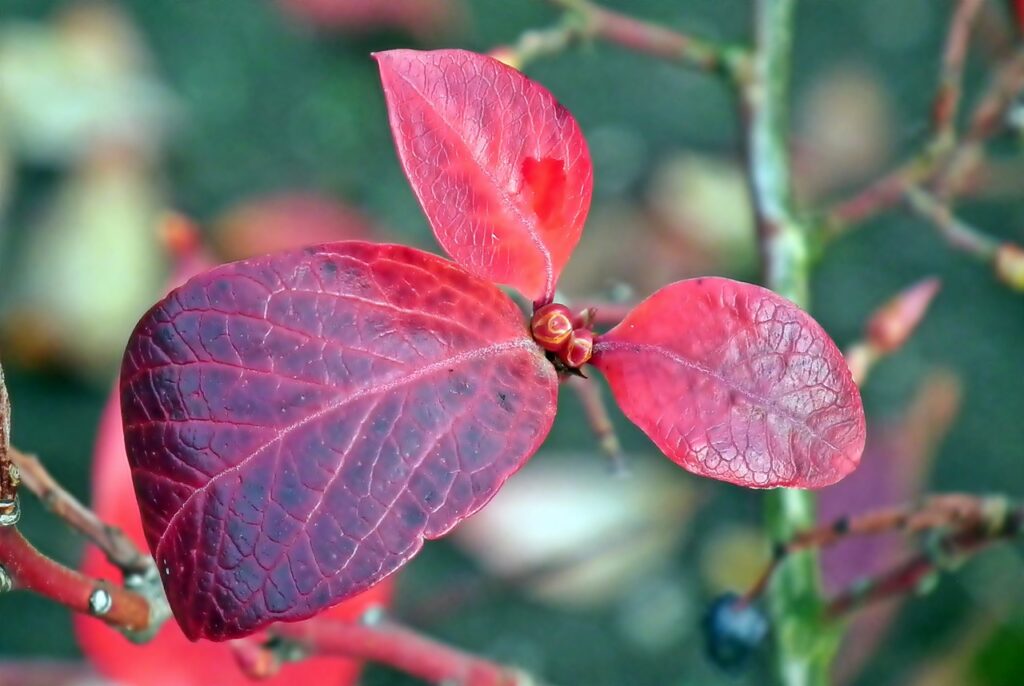
Foliar fruit flagging: Always more to the story
Of course, this beautiful natural history story is more complicated than it looks at first glance. Other studies in the 1980’s didn’t definitively prove that fruits around brightly colored leaves got picked more often. Because of this, many scientists doubt whether this sort of communication was actually happening.
However, starting in the 1990’s and more recently, other work has shown that the color of the leaves is less important than the contrast.
The difference between the color of the fruit and the surrounding leaves is what wins birds’ attention. Experiments using fake leaves showed that when berries stood out from their background, they got picked more often. Blue or black berries (like many of those listed above!) get more attention when up against a bright red or orange background. This makes them more obvious to visual foragers like birds (and people!). Foliar fruit flagging may thus be more about making berries really pop than giving any particular signal.
Next time you see a shrub, tree, or vine that is changing color especially vibrantly or early, look for fruits. You may be eavesdropping on a visual message between the plant and the winged partners that help it move its seeds.
Thanks for reading—Want more Gulo in Nature?
If you enjoyed this post, please support the blog by subscribing to the newsletter, sharing on social media, or buying Charles a coffee. Your support helps cover upkeep costs for the site and lets us expand and improve posts and content. Until next time, go get to know your natural world!

